Ways to develop and modernize the ZU-23-2 anti-aircraft gun
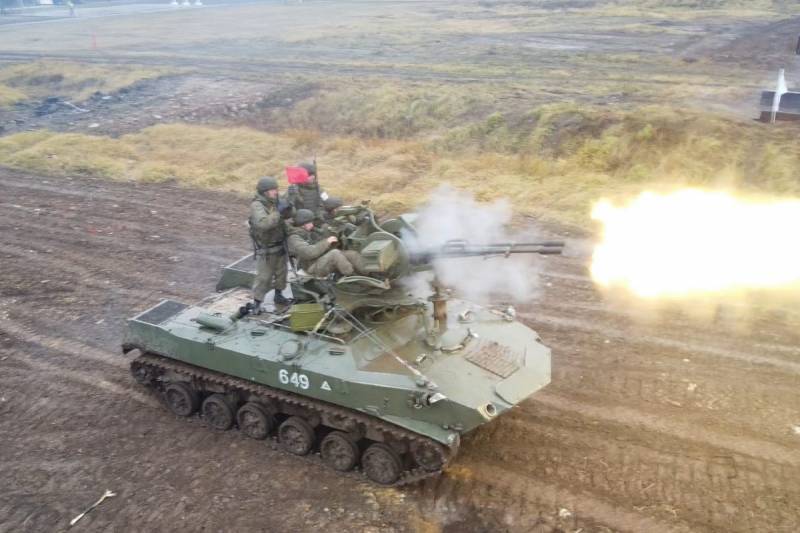
ZU-23-2 on an armored personnel carrier BTR-D. Photo by the Russian Ministry of Defense
In 1960, the towed twin anti-aircraft gun ZU-23-2 entered service with the Soviet army. It was intended to combat low-flying targets, and at the time of its appearance it coped with such tasks. Further development aviation reduced the effectiveness of the zushka, but the army is still in no hurry to abandon it. Moreover, using modern solutions and components, this installation can be modernized and made efficient again weapons.
Basic design
The ZU-23-2 product is a towed anti-aircraft gun for military air defense. The unit weighing less than 1 ton is transported on and off-road using a tractor or placed on a suitable chassis. Before combat duty and shooting, deployment is required, which does not take much time. Installation calculation – 5 people.
The installation is built on a carriage with wheels. Its lower part is made in the form of a platform with supports lowered to the ground; the wheels are raised. A rotating platform-machine with a swinging installation of guns, ammunition boxes, shooter stations, etc. is mounted on it. The design of the carriage provides for circular horizontal guidance and elevation angles from -10° to +90°.
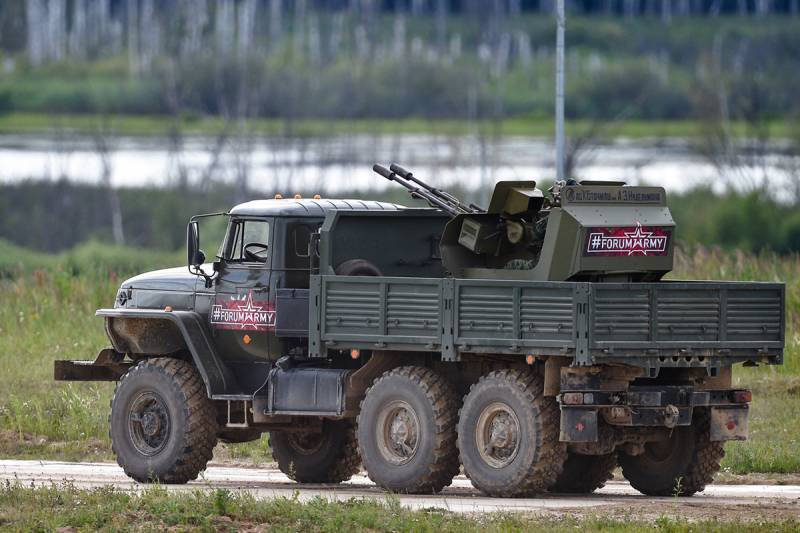
Anti-aircraft installation with additional armor on the Ural vehicle. Photo by the Russian Ministry of Defense
The ZU-23-2 is equipped with two 2A14 automatic cannons of 23 mm caliber. They have a rifled barrel with a length of 87 klb and automation based on gas removal with locking with a wedge bolt. Rate of fire – 1 thousand rounds/min. on the trunk. The initial velocity of the projectile is at least 950 m/s, depending on the type of ammunition. An effective fire range of 2,5 km and an altitude reach of 2 km are provided.
The guns use a 23x152 mm shot. Ammunition is supplied by belts on both sides. In our country and abroad, a fairly wide range of 23-mm projectiles for various purposes with different characteristics has been developed.
To aim the guns, the gunner uses the ZAP-23 artillery sight. Direct aiming control is carried out using flywheels. High guidance speeds are provided, thanks to which the ZU-23-2 can accompany and attack air targets at speeds of up to 300-400 m/s.
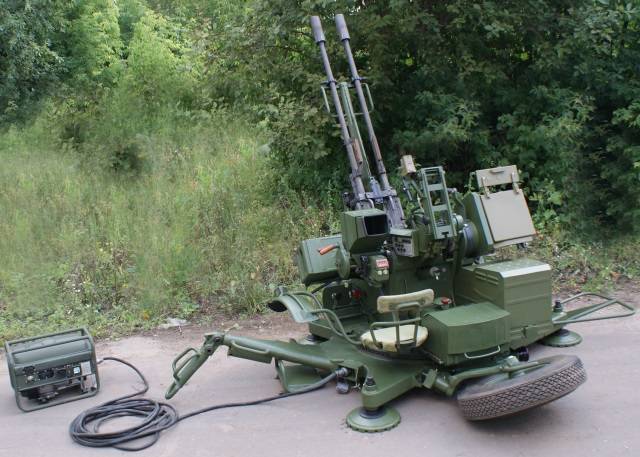
Installation of ZU-23/30M1-4 with a modern control system. Photo by PEMZ
Mobility issues
The ZU-23-2 in its basic configuration is towable and requires a tractor. In addition, deployment to a position is required before firing begins. All this to some extent complicates operation and combat use. However, it is not difficult to get rid of such restrictions.
Small dimensions and weight allow the “zushka” to be placed on various self-propelled chassis. Almost any suitable truck can be used as the latter. Also ZU-23-2 were and are being installed on MT-LB, BTR-D, etc. transporters. Due to this placement, the mobility and mobility of the installation is dramatically improved, and it also becomes possible to keep the installation in a combat-ready position without wasting time on deployment.
Radical solutions are also possible. Thus, at the Army-2023 forum, the Kizlyar Electromechanical Plant concern showed a prototype of a self-propelled unit based on the Typhoon-VDV armored car and ZU-23-2. The latter was rebuilt into a full-fledged remote-controlled combat module and placed on the pursuit vehicle without the possibility of removal and use in its original towed form.
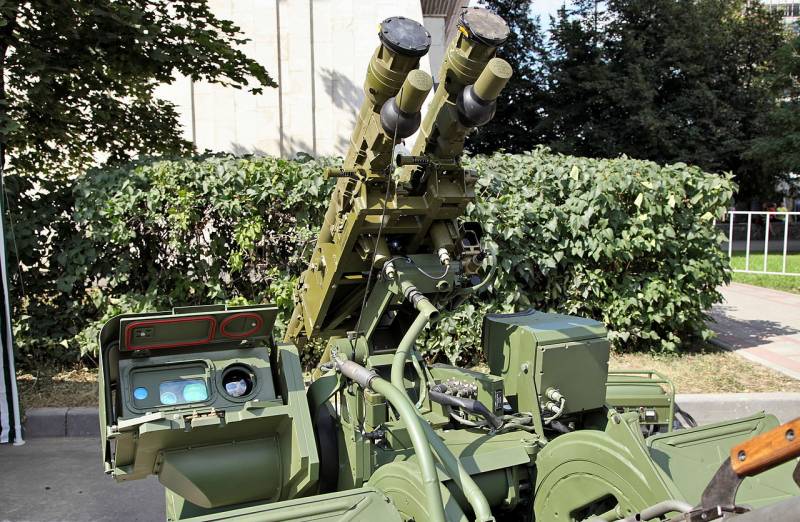
ZU-23/30M1-4 with an optical-electronic sight and MANPADS. Photo Vitalykuzmin.net
Management tools
A number of shortcomings of the ZU-23-2, from a modern point of view, are associated with obsolete sighting devices and guidance means. The standard sight can only be used during daylight hours, and also places the bulk of the calculations on the gunner. In turn, manual guidance drives increase the load on a person and reduce the time of his effective work.
Modern technologies can solve both problems. Thus, in recent decades, a number of ZU-23-2 modernization projects have been created in our country, providing for the introduction of electronic control systems. All of them are built on general principles, but new solutions are also proposed.
In such projects for upgrading the gun, the standard sight is replaced with a full-fledged optical-electronic station with day, night and laser rangefinder channels. Such sighting devices are interfaced with digital control systems, including a ballistic computer, automatic target tracking, monitor for issuing video signals and data, etc. A number of projects provide for the possibility of receiving target designation from the outside for immediate shooting at a target.
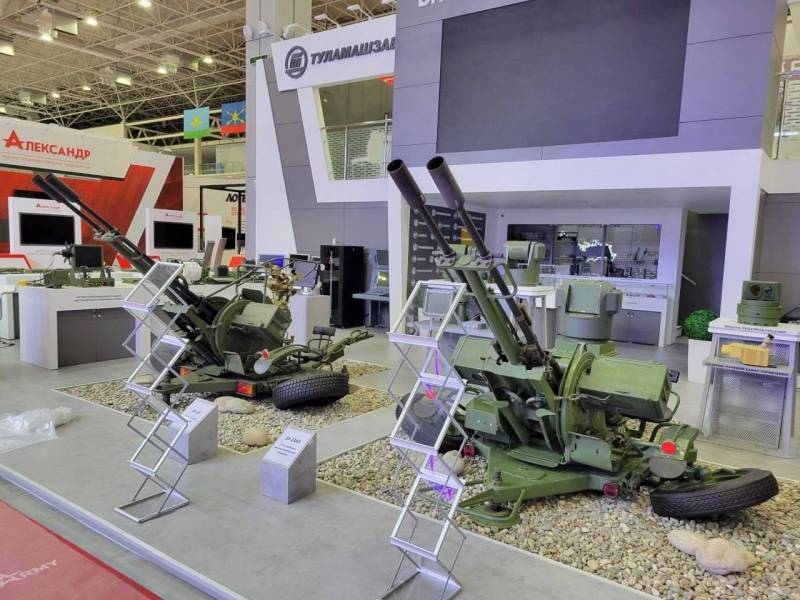
Automated installation of ZU-23AE (in the foreground). Photo Telegram / "Military informant"
Manual drives are being replaced by electrical systems with remote control. Thanks to this, instead of flywheels, more convenient and ergonomic controls appear at the operator’s seat, and it also becomes possible to automate aiming. In addition, now the carriage with the artillery unit and the operator-gunner's workplace can be separated.
Weapons development
A pair of 23 mm cannons with a total rate of fire of 2 thousand rounds/min. is a serious fire weapon. As practice shows, such weapons are still capable of fighting a wide range of air and ground targets, including protected ones. At the same time, there are ways to further increase firepower and overall combat effectiveness, incl. with new features.
The traditional way to improve the firing characteristics of the ZU-23-2 in recent decades has been the development of new ammunition. For the 23x152 mm shot, projectiles for various purposes with improved characteristics were created, and the bulk of such projects appeared abroad. Apparently, the potential of 23-mm shells has not yet been exhausted, and new fragmentation, armor-piercing, etc. shells can be created. ammunition with higher performance.
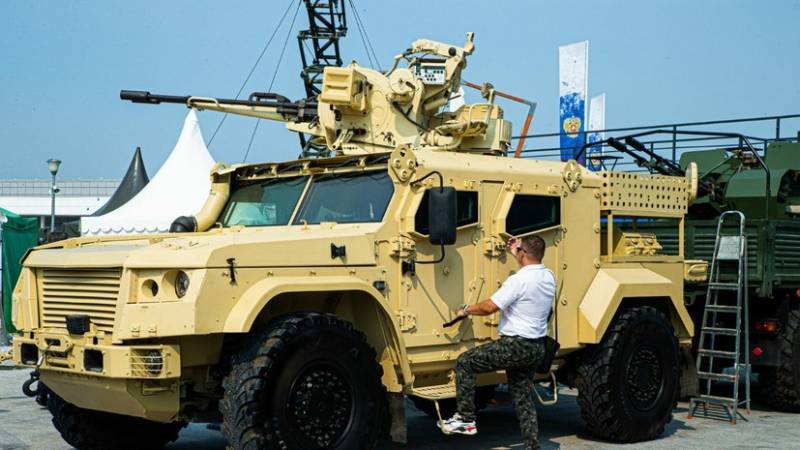
Armored car "Typhoon-VDV" with an armored fighting vehicle based on the ZU-23-2. Photo "Concern KEMZ"
The firing characteristics of a zushka can be significantly affected by a projectile with a programmable fuse. With its help, the installation will be able to more effectively attack any “soft” ground and air targets. Such ammunition is of particular interest in the context of combating UAVs. The ability to create a cloud of fragments at a specific point in space will dramatically increase the likelihood of hitting a small and/or maneuvering target. In recent years, the domestic defense industry has repeatedly reported on the development of programmable fuses, incl. for 23 mm shots.
In a number of domestic and foreign modernization projects, the artillery unit of the ZU-23-2 was supplemented with a missile unit. In this case, an additional launcher for portable air defense missiles appeared on the carriage. The use of missiles was ensured by a modernized control system with appropriate instruments. The presence of MANPADS significantly increases the range and height of target destruction.
Potential for modernization
The ZU-23-2 anti-aircraft gun, created more than 60 years ago, is still of interest from the point of view of further development and modernization. A pair of 23-mm guns have fairly high tactical and technical characteristics that can still be used today. At the same time, new targets for them have appeared above the modern battlefield - small and medium-sized UAVs entering the affected area.
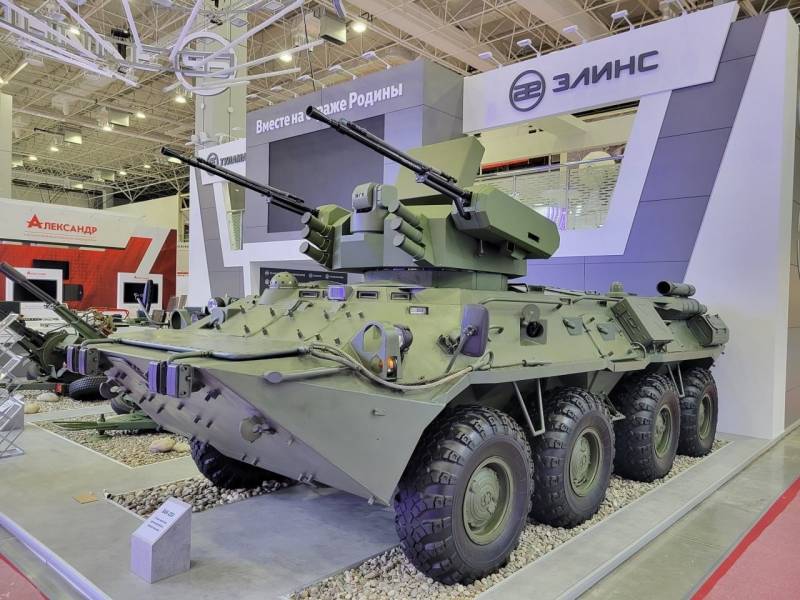
Self-propelled gun ZAK-23E with 2A14 guns. Photo Telegram / "Military informant"
Other elements of the ZU-23-2 do not always meet modern requirements. Therefore, the bulk of projects for upgrading the gun gun include replacing certain components and introducing new systems, but while maintaining the guns, carriage elements, etc. Most often we are talking about replacing the standard sight with electronics and a full-fledged fire control system, improving ergonomics, etc.
The potential of the 2A14 guns can be used in other ways. Thus, at Army 2023 they showed the ZAK-23E anti-aircraft self-propelled gun for the first time. It received an original combat module with a pair of 23 mm cannons. To optimize the layout, they were placed in separate casings on the sides of the module, and the ammunition supply system with belts was placed between them.
Thus, the legendary “Zushka”, despite its advanced age, retains its place in the troops and is used to solve various fire missions. In parallel, the industry offers various options for its modernization to obtain new capabilities and improve basic characteristics. Obviously, the process of updating the original design or creating new products based on it will continue, and the ZU-23-2 will be able to remain in service for a long time.
Information